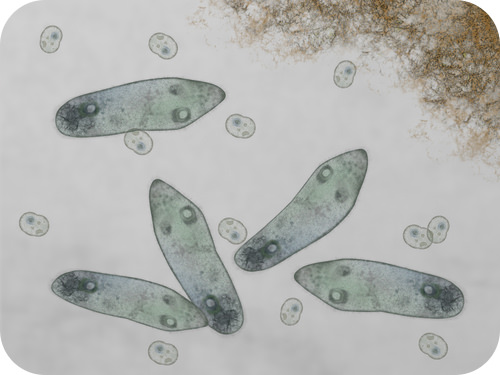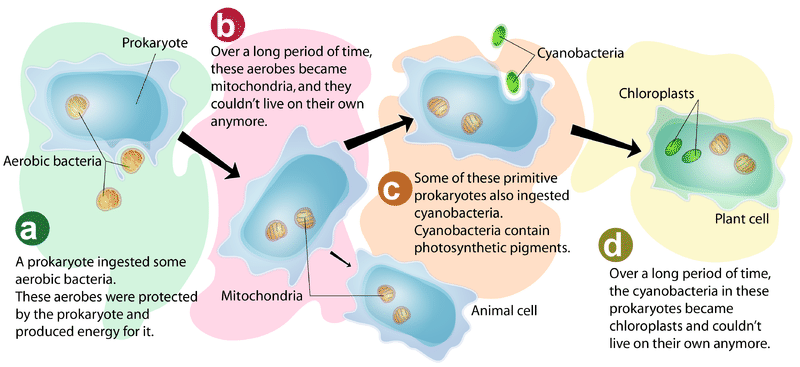8.9: Protist Evolution
- Page ID
- 1473

What's the difference between a bacterium and a simple protist?
Were simple protists the first eukaryotic organisms to evolve? Probably. A protist is a eukaryote, so each cell has a nucleus. Otherwise, simple protists, like the Paramecium and amoeba, can be fairly similar to bacteria.
Evolution of Protists
Scientists think that protists are the oldest eukaryotes. If so, they must have evolved from prokaryotic cells. How did this happen? The endosymbiotic theory provides the most widely-accepted explanation. That’s because it is well supported by evidence.
The First Eukaryotic Cells
According to the endosymbiotic theory, the first eukaryotic cells evolved from a symbiotic relationship between two or more prokaryotic cells. Smaller prokaryotic cells were engulfed by (or invaded) larger prokaryotic cells. The small cells (now called endosymbionts) benefited from the relationship by getting a safe home and nutrients. The large cells (now called hosts) benefited by getting some of the organic molecules or energy released by the endosymbionts. Eventually, the endosymbionts evolved into organelles of the host cells. After that, neither could live without the other.
As shown in Figure below, some of the endosymbionts were aerobic bacteria. They were specialized to break down chemicals and release energy. They evolved into the mitochondria of eukaryotic cells. Some of the small cells were cyanobacteria. They were specialized for photosynthesis. They evolved into the chloroplasts of eukaryotic cells.
 Endosymbiotic theory explains how eukaryotic cells arose.
Endosymbiotic theory explains how eukaryotic cells arose.Evidence for the Endosymbiotic Theory
Many pieces of evidence support the endosymbiotic theory. For example:
- Mitochondria and chloroplasts contain DNA that is different from the DNA found in the cell nucleus. Instead, it is similar to the circular DNA of bacteria.
- Mitochondria and chloroplasts are surrounded by their own plasma membranes, which are similar to bacterial membranes.
- New mitochondria and chloroplasts are produced through a process similar to binary fission. Bacteria also reproduce through binary fission.
- The internal structure and biochemistry of chloroplasts is very similar to that of cyanobacteria.
Summary
- Scientists think that protists are the oldest eukaryotes.
- Protists most likely evolved from prokaryotic cells, as explained by the endosymbiotic theory. This theory is well-supported by evidence.
Review
- How did the first eukaryotic cells evolve, according to endosymbiotic theory?
- Identify two pieces of evidence for endosymbiotic theory. Explain how this evidence supports the theory.
- How are additional mitochondria produced?
| Image | Reference | Attributions |
 |
[Figure 1] | License: CC BY-NC |
 |
[Figure 2] | Source: CK-12 Foundation License: CC BY-NC-SA 3.0 |

